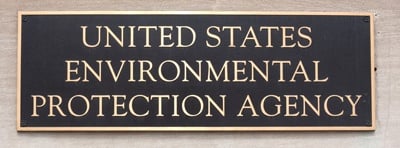DC is one of my favorite cities in the country. That’s different than me saying Washington, of course. I’ve visited Washington on multiple occasions in ... Read More The post Rows and Aisles (DC and Washington, Too) appeared first on The Jose Vilson.
DC is one of my favorite cities in the country. That’s different than me saying Washington, of course. I’ve visited Washington on multiple occasions in my youth, including trips to the Smithsonian, a youth demonstration in my teens, and a protest related to the Supreme Court decision on affirmative action in 2003. Those were “Washington” trips, focused on the official buildings and monuments people immediately connect to the federal government.
That’s separate from DC, though, a combination of the neighborhoods and people that still call the space Chocolate City. My cousin Vanessa invited me to her new crib in the DMV area in my 20s. I’d hop on the Amtrak quarterly, exploring the cultural institutions that made this place home for millions of Black people. In my twenties, it felt miraculous to eat a fresh meal and pick up a book or 10 at Busboys and Poets. Vanessa also connected me to Malik, who pulled us into the burgeoning underground R&B/soul scene. When the National Museum of African American History and Culture opened a permanent home in 2016, the federal government built a connective tissue between Washington and DC, too.
The geometry of gridded streets mixed with spaces for art and authentic cuisine felt like people playing with shades and hues within a coloring book. The Trump administration has already ripped through the semblances of Washington airs and is now using their power to suppress these DC norms, too.
DC became a favored destination around the time when I began my teaching career. In my classroom, I teetered between using rows and aisles or groupings for seating arrangements. I immediately saw the pros and cons of the gridded seating. During “formal” assessments, I could quickly get a sense of individual learning and behaviors in relation to the content. But as I stood in front of them, I’d get anxious if the classroom was quiet for too long. The classroom needed a little more noise as that’s where the magic actually happens. During learning activities, getting them to learn from each other felt more organic in tables of two or more.
In other words, these rows and aisles helped with a perception of social control, but had diminishing returns for the desired culture of my classroom.
Not enough has been said about how our classrooms can be conduits for the societies we wish to live in. Over the years, we’ve had plenty of conversations about the school-to-prison pipeline, and rightly so. The multiple forms of justice in this lattice include racial, gender, disability, and (economic) class justice. However, we don’t talk about how many of us have been complicit in teaching through autocratic means. Yes, that includes me. It’s humbling in the backdrop of an unapologetic autocracy at several levels of government.
At my best, I sought input from students and families, which provided for the best learning experiences in our classes. I settled disputes with a multitude of techniques well honed by the latter parts of my career (save, perhaps that one year I was under a teacher improvement plan). Kids would debate, if not loudly argue, with each other about math. I’d laugh it off because they were as excited about math as they were about their favorite musicians and sports. I didn’t need to “discipline” or “manage” in the traditional sense, either. I just pushed students to rely on each other and perhaps me to elevate their learning experiences.
However imperfectly, and yes, it wasn’t always perfect.
At worst through my career, it was my way or the dean’s office/after-school detention/dramatic calls home, etc. Sometimes, I thought I was doing right by kids by creating a heavily structured and disciplined classroom. I simultaneously built resentment for not letting them leverage their ways of knowing and talking towards their learning. On a couple of occasions, it created rebellion. When it’s 30 on 1 in our classrooms, the fact that more revolts don’t happen is remarkable.
In those moments, I’d question whether my altruism in teaching gave way for internalized suppression of the people and communities I purportedly serve.
Which makes me think of the pedagogy the Department of Justice is serving the people of DC now. Federal agents are asking people for IDs on their porches, standing in the middle of pedestrian traffic ominously, and posting Black men in handcuffs on official social media accounts. Over the years, some have cheered this type of behavior as necessary for a false sense of safety and security. But as I look at what’s happening in DC, not to mention NYC, Los Angeles, Boston, and Chicago, I wonder what would happen if everyone stopped confusing control for security.
For that matter, I wonder what would happen if our governments would simply invest in everyone’s individual and collective well-being? The relationship between schools and society isn’t perfectly parallel. But what would society look like if everyone was shown a better way to be in community, and for governments to support such a vision?
Here’s something that the best teachers know and teach political leaders, too: forcing students to sit in rows and aisles for long periods of time isn’t going to solve your classroom culture issues. It’s, at best, a temporary fix that might grant stillness for a bit. At worst, it reminds students that the classroom isn’t for them.
That’s a lesson America refuses to learn to this day.
jose, who has found new appreciation for John 10:10 …
The post Rows and Aisles (DC and Washington, Too) appeared first on The Jose Vilson.






